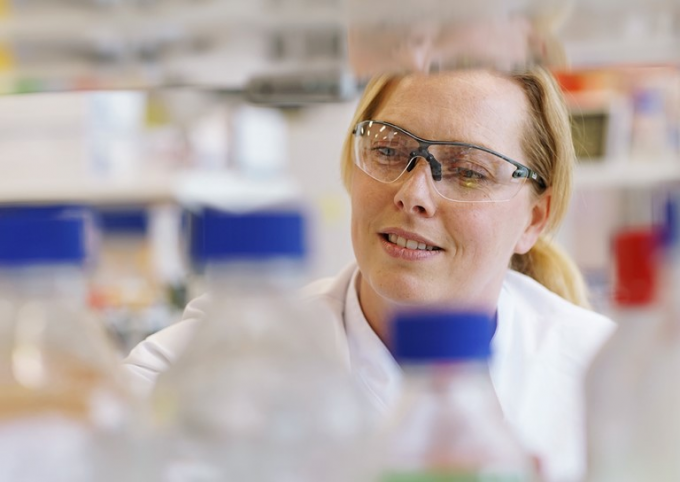Syncona’s Freeline trials encouraging – Syncona has nine investments in companies addressing a range of diseases, including many that are currently untreatable. QuotedData’s analyst, James Carthew, wrote an article about the company recently which explains a bit about how Syncona goes about investing in these businesses.
One of these, Freeline, is using gene therapy to tackle, in the first instance, Haemophilia B, Fabry disease and Gaucher’s. It has just published updated clinical trial data on the latter two. The language is a bit technical but the results are encouraging.
“These data in Fabry Disease and Gaucher Disease are very promising and underscore the confidence we have in our proprietary gene therapy platform, using our next-generation AAV technology,” said Chris Hollowood, executive chairman of Freeline. “This comes just a few days after the data Freeline announced at the European Association for Haemophilia and Allied Disorders (EAHAD) conference in the Phase 1/2 trial of its Haemophilia B programme, FLT180a. That trial has shown the potential for the Freeline platform to deliver sustained high protein levels and provides encouragement that higher GLA levels could be achievable in Fabry Disease as we dose escalate.”
Fabry Disease
Freeline’s programme, FLT190, is an investigational liver-directed adeno-associated viral (AAV) gene therapy for the treatment of Fabry Disease. The programme is the first clinical-stage AAV gene therapy study globally in Fabry Disease. FLT190 is an in-vivo gene therapy administered by a one-time short intravenous infusion. Preliminary data were presented today on the starting dose in a dose escalation study. The infusion was well tolerated. A 3 to 4-fold increase in plasma GLA activity was achieved by week 4 (0.3 -> 1 +/- 0.2 nmol/hr/ml) and sustained through the data cutoff at week 20.
The study, named MARVEL1, is a multi-centre, international, dose-escalating Phase 1/2 study in adult males with classic Fabry Disease. The study is focused on assessing the safety of FLT190, and its ability to transduce liver cells to produce continuous high levels of GLA. In addition to safety, endpoints in the study include clearance of Gb3 and LysoGb3 from the plasma and urine, baseline renal and skin biopsies (repeated in long term follow up), renal and cardiac function, GLA immune response, viral shedding and quality of life.
Prof. Derralynn Hughes, Royal Free Hospital, London, UK “We are pleased to be sharing early clinical information that shows for the first time that AAV gene therapy can deliver sustained levels of GLA from a single infusion. The dose escalation will allow us to explore the levels required to bring a meaningful therapeutic benefit to patients suffering from the disease. I am hopeful that this trial will translate into the potential for better outcomes for the Fabry community.”
As of the data cutoff date, there have been no infusion-related adverse events. Two Grade 1 or 2 serious adverse events have been reported in the study. The patient had, similar to those observed in other programs using AAV-based gene therapy, clinically asymptomatic elevations in ALT levels and levels returned to normal range within 3 weeks following immune suppression. A grade 2 myocarditis of unknown aetiology was observed but repeat MRI scans showed no evidence of changes compared to base line and it resolved without specific intervention.
Gaucher Disease
Freeline’s Gaucher Disease program, FLT200, is a liver-directed AAV gene therapy for the treatment of Gaucher Disease type 1 and is designed to increase levels of beta-glucocerebrosidase (GCase). It is expected that the normal glucocerebrosidase (GBA) gene delivered to the liver by FLT200 will be able to produce a fully functioning GCase enzyme and prevent the accumulation of fat molecules, specifically the substrate glucosylceramide, to toxic levels inside the cells affected by the disease. The pre-clinical data suggested that, after a single injection of Freeline’s AAV-based GBA construct, long term sustained steady state levels of fully active GCase can be achieved in the bloodstream. In addition, GCase uptake by macrophages in key organs was observed, as well as significant substrate clearance in GBA deficient animal models. There was also a greater bioavailability than bi-weekly infusions of velaglucerase alfa; a medication indicated for long-term Enzyme Replacement Therapy (ERT) for patients with Gaucher Disease type 1. These pre-clinical data suggest that AAV liver-directed gene therapy has therapeutic potential for Gaucher Disease providing sustained levels of GCase in the bloodstream at all times and with greater bioavailability than existing ERT.
SYNC : Syncona’s Freeline trials encouraging
